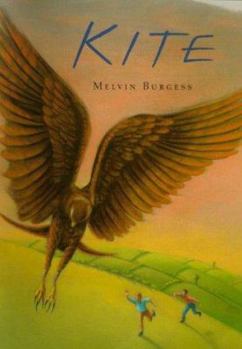Kite
Select Format
Select Condition 
Book Overview
Taylor loves birds and collects eggs. He has the rare opportunity to enhance his collection when a pair of red kites nest nearby. The only problem is, the red kites are extremely rare - only twenty-five are left in the country. Taylor's father, a gamekeeper, is under orders from his boss, the landowner Reg Harris, to kill the kites, who are birds of prey and will go after Harris's grouse population. For Taylor, the temptation also to take the eggs from the kites' nest becomes insurmountable when Harris actually asks him to do the job, even though it is illegal. Pangs of terrible guilt follow, and although Taylor tells Harris he's gotten rid of the incriminating evidence, he secretly salvages and hatches one egg. But as soon as the bird is born, elaborate plans must be made to keep its existence a secret in order to save it from being shot during the approaching hunting season.
Format:Hardcover
Language:English
ISBN:0374342288
ISBN13:9780374342289
Release Date:April 2000
Publisher:Farrar Straus Giroux
Length:181 Pages
Weight:0.61 lbs.
Dimensions:0.8" x 5.8" x 8.6"
Age Range:9 to 12 years
Grade Range:Grades 4 to 7
Customer Reviews
1 rating
Kite - the condor's cousin
Published by Thriftbooks.com User , 24 years ago
In "Kite", English author Melvin Burgess strikes a refreshing chord for readers seeking authenticity in animal novels for young adults. The softened world of sentimental animals boosk for children is challenged in this realistic novel about an endangered bird, a red kite. The book was written in collaboration with a wildlife biologist and details are wonderfully vivid and realistic. Burgess does not tread beyond the bounds of decorum for children 9 and older; rather "Kite" is quick-paced, amusing, and heart-warming.. The main characters opt at the end of the novel to care for a wild animal who will never be returned to the wild - a major committment, as any animal owner recognizes. And although there is violence to animals, it is committed by the villain, who represents old beliefs which only the misguided could adhere to given the peril to wildlife in the present day. The main character is sensitive, caring, and conflicted. The book will appeal most to children whose parents have dealt with harsh realities, such a killing animals for food or livelihood yet loved animals at the same time, and had to explain their values to their children. Major conflict in the novel occurs between the son and father, gamekeeper for the landowner, who runs the hunt. To disagree, the father must condone his employer's actions or lose his position, and his home. The paradox of killing animals for food is set baldly against the killing of animals for sport or money. Set in England, the book's endangered animal is a red kite. Killing kites has recently been made illegal, but some locals still view kites as "vermin." The landowner Harris prizes his game birds, the pheasants, because he makes his living from hunters' fees for killing them. But Harris' cruel actions alienate even the hunters and eventually provokes the young boy's father to side with his son in the fight for the kite's life.The books is not bleak, despite the seriousness of its message. Descriptions of the kite's awkward growing stages are humorous and memorable. Close attention to detail of bird behavior shows throughout. And finally, we learn the red kite populations burgeoned in the years of violence in England. Pecking the bodies of the dead was among the actions that gave this bird an odious reputation, much like the US condor or buzzard - a carrion animal. And yet, Burgess chose the kite to deliver his message.Burgess' book distills some of the ecological/environmental issues that face English, Americans, and people of all countries - whether to adhere to the old ways (which were necessary then but are no longer, and are in fact detrimental) or to view with clear eyes the need to preserve all individuals in the biosphere for the parts they play in keeping the whole healthy.





